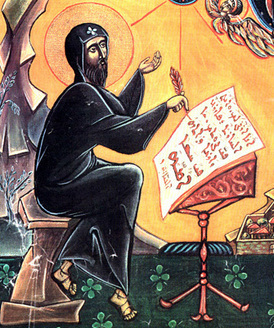|
A rather good and brief overview of Eastern Christianity appeared in the October 2008 issue of One, the monthly magazine of the Catholic Near East Welfare Association. I have given you only a portion of the article; the full piece can be found here.
|
|
by Chorbishop John D. Faris
I have been asked to speak about Christians in the Middle East. First, it may be helpful to define the term "Middle East." The Middle East is a subcontinent with no clear boundaries and it is often used as a synonym for Near East, in opposition to Far East. The term "Middle East" was popularized in the early 20th century in the context of the rivalry between the British and Russian empires over the region. Traditionally, it has been loosely defined as encompassing territories in southwestern Asia and parts of North Africa.*
It has been my experience that there are two notions regarding this topic that are difficult for North Americans to grasp: the variety of Christians in the region and the possibility of the extinction of Christianity in the region.
 North Americans are accustomed to church as a product of Western culture divided into Catholics and Protestants. For most, the Catholic Church is the Latin Church and any variety within it is presumed to be the result of ethnic origins: Catholics are different because they are Irish or German or Italian or Polish or Latino. A Byzantine or Maronite group is viewed with suspicion as somehow "not under the pope." In reality, there are many Catholic churches, 22 to be precise; there is the Latin Church (by far the largest) and 21 Eastern Catholic churches, all "under the pope."
North Americans are accustomed to church as a product of Western culture divided into Catholics and Protestants. For most, the Catholic Church is the Latin Church and any variety within it is presumed to be the result of ethnic origins: Catholics are different because they are Irish or German or Italian or Polish or Latino. A Byzantine or Maronite group is viewed with suspicion as somehow "not under the pope." In reality, there are many Catholic churches, 22 to be precise; there is the Latin Church (by far the largest) and 21 Eastern Catholic churches, all "under the pope."
The plurality of the churches is no where more evident than in the Middle East, where Christians from almost all the churches have converged over the past two millennia. One finds many of these Eastern Catholic churches represented there as well as the Latin Church (which is really a 12th-century import) as well as many Orthodox and Protestant churches. The question that immediately comes to mind is, if Christ started the church, why are there so many churches, so many "flavors" of Christianity? The presumption is that the multiplicity of churches is a consequence of disputes and divisions. This is only partially true.
In the near future, the Catholic Information Service will be publishing a new booklet on Eastern Christianity by Jesuit Father Steven Hawkes-Teeples, professor of liturgical history at the Pontifical Oriental Institute, Rome. Look for the booklet Eastern Christians and Their Churches.


Leave a comment